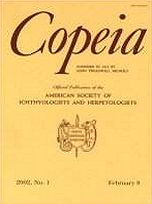We provide descriptions for two new cryptic species belonging to the Liolaemus alticolor group from northern Argentina and northeastern Chile. The new species were previously considered conspecific with either Liolaemus walkeri in northeastern Chile or L. alticolor in northwestern Argentina and adjacent Chile. However, the new species differ from these taxa, and all other members of the alticolor group, in a number of characteristics. Liolaemus chaltin n. sp. differs from L. alticolor from the type locality (Tiahuanaco, Bolivia) in the following ways: this new species has a larger body size; a fragmented vertebral stripe; and a pigmented subocular (white in L. alticolor), and is one of just three members of the alticolor group that is oviparous. Liolaemus puna n. sp. differs from all other members of the alticolor group in that male L. puna lack paravertebral markings and dorsolateral and vertebral stripes. Females, however, are similar to other members of the alticolor group but can be distinguished from them by several meristic characters. Liolaemus puna is widely distributed throughout the high-elevation (3680–4400 m) Puna regions (a flat or gently sloping steppe dominated by perennial bunch grasses and small shrubs) in northwestern Argentina and northeastern Chile. Liolaemus chaltin is known only from the Puna of central Jujuy Province, Argentina (3400–3750 m). Based on examinations of the type series of L. alticolor and L. walkeri, we determined that virtually all northern Chilean populations of Liolaemus previously considered to belong to either of these two species should be assigned to L. puna. Thus, the range of L. alticolor is restricted to Bolivia and southern Perú, and the range of L. walkeri is restricted to central and southern Andean Perú. Liolaemus chaltin is oviparous, and L. puna is viviparous, and because both are morphologically similar to L. alticolor, some investigators have suggested that some populations of L. alticolor may be reproductive bimodal. Our studies, however, indicate that these populations represent sympatric populations of the cryptic species described herein. A diagnostic key is provided for the currently recognized members of the alticolor group.
BioOne.org will be down briefly for maintenance on 17 December 2024 between 18:00-22:00 Pacific Time US. We apologize for any inconvenience.
How to translate text using browser tools
1 December 2004
Two New Liolaemus from the Puna Region of Argentina and Chile: Further Resolution of Purported Reproductive Bimodality in Liolaemus alticolor (Iguania: Liolaemidae)
Fernando Lobo,
Robert E. Espinoza
ACCESS THE FULL ARTICLE





